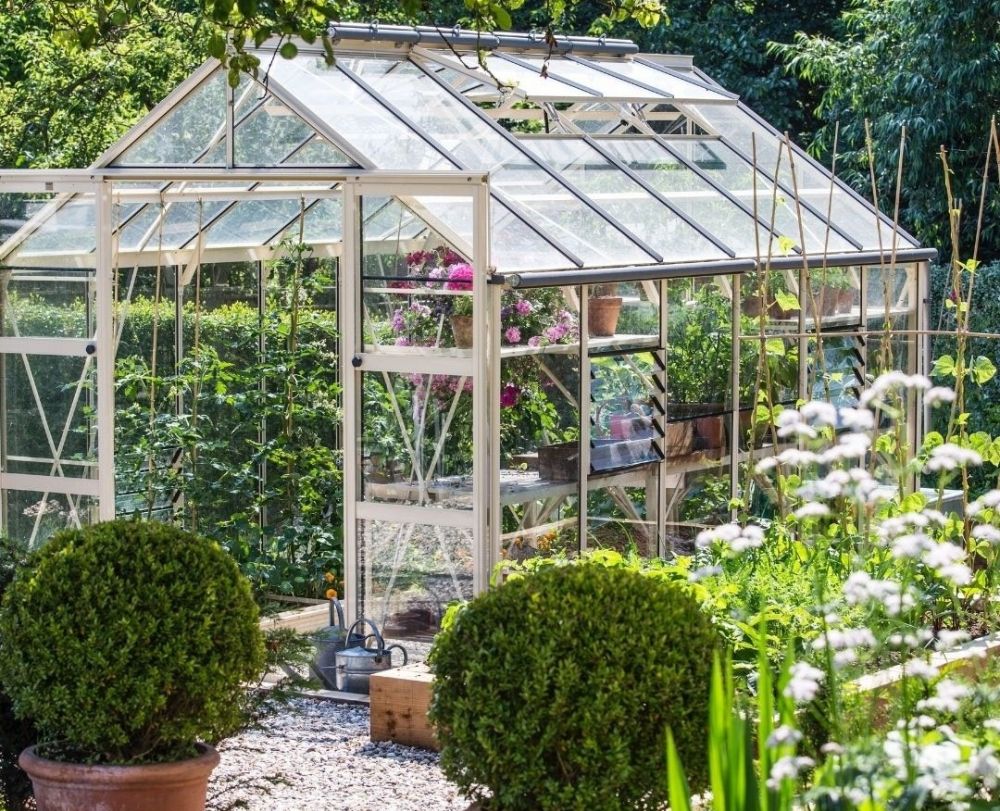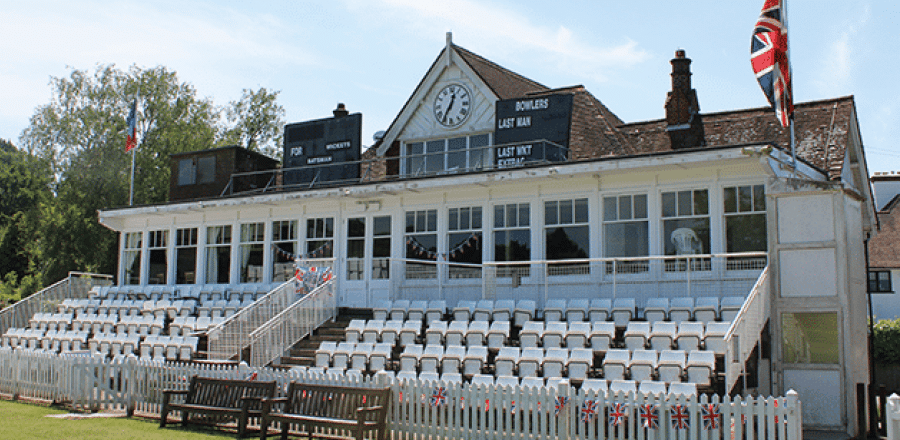If you are keen gardeners like my wife and I then a greenhouse is a must have.
It’s the place where you can sow seeds, nurture young perennials and plug plants, then pot these up ready for the transition to the garden. This is not only enjoyable and rewarding, but it also saves you hundreds of pounds! The greenhouse is also the place where you can grow fruit and vegetables, such as tomato plants and courgettes. You can even grow more exotic plants, such as lemon and orange trees. It’s also a safe haven where you can overwinter less hardy plants in readiness for the next season.
A greenhouse helps harness both the light and heat of the sun to create a more stable environment for your plants to grow. You can extend its use into the autumn and winter periods by adding heating, so this is a consideration when planning its use
We use our greenhouse predominantly as a feeder for our Kitchen Garden. So it is situated in the midst of this area of the garden. Every year my wife plans out her crops for the Kitchen Garden, orders seeds at appropriate times, then propagates these in trays in our greenhouse. Once the young plants are large enough they are transferred to small pots, then once the timing is right these are transferred to the raised beds outside. This year we have grown from seed leaks, spring onions, radishes, tomatoes, courgettes, sugar snap peas and butter head lettuce.
Apart from its practical use a greenhouse can also be a very attractive focal point in the garden, in fact it can be the catalyst to designing a whole new area. Obviously cost can be a factor and the more attractive, and more sophisticated it is tends to be reflected in the price. It could be traditional in its looks, or contemporary. So think about your environment, the style and look of your house and try to match the design of the greenhouse to suit this.
When planning your greenhouse size is a consideration. You need a minimum width of 6ft, but 8ft is better. An ideal length is 10, or even 12ft. This gives you room to move around and enough space for at least 2 areas of staging, with room below for storage of pots, or further growing if your greenhouse choice doesn’t require dwarf walls.
Siting the greenhouse is important. Don’t make it too far from the house so its easy to get to. The best orientation for growing crops all year round is to line up the ridge East – West, as this will help optimise light in the winter months.
The greenhouse needs a firm, flat base. If it has dwarf walls it will need proper footings. If not a combination of a firm flat base to fix, or lay the frame and a pathway to work from, with sufficient drainage, or inset beds for plants and planting. If you are going to work all hours, you’ll need a safe electricity supply for lighting and heating. You may also benefit from an insulated water supply, or rainwater tank to supply your watering cans or irrigation system.
Choice of material: This is an important factor. Powder Coated Aluminium is practical and can be attractive. Or, wood (typically Cedar, but increasingly Accoya) can be similarly attractive, stained or painted in the case of Accoya. Wood also helps hold the heat longer so this can be useful when conserving energy.
Contemporary or Traditional: The Hartley Botanic, Opus Glasshouse is a statement piece, but alongside a bronze windowed contemporary house it will look stunning. The Palmako Glasshouse in treated wood is equally contemporary, but could suit a tighter budget. Alitex have for many years been building beautiful Victorian style greenhouses that blend seamlessly with older properties. They come with every bell and whistle and a huge range of sizes to suit the garden. By comparison Robinsons make an affordable range of Victorian greenhouses that may suit your pocket. Both Alitex and Robinsons are made in powder coated Aluminium.
Dual purpose: The Potting Shed/ Greenhouse Combi is an attractive option for lots of people, as it combines a compact shed with a greenhouse, so a place to store all your garden tools and have a potting area, all in the vicinity of the greenhouse or Kitchen Garden. We have spec’d a number of these in gardens and used Woodpecker Joinery as our partner. They make some really nice Victorian style greenhouses and combi units in cedar wood. If your budget stretches further then also look at Gabriel Ash, their RHS Rosemoor Combi is very appealing.
Practicality: If this is what guides your thinking then your best option is a Rhino Greenhouse. These are superbly designed and made greenhouses, now in a number of powder coated colours, that come with staging, blinds, everything you need to make for a safe and workman-like environment for your fledgling plants.
Budgets: (Excluding bases and erection) vary from an 8ft x 10ft Rhino Premium greenhouse at £4,250, to a similar sized Robinsons Victorian Rushmoor greenhouse for £8,200, to £18,000 for the Hidcote from Alitex.
A useful list of website addresses:
www.robinsonsgreenhouses.co.uk
For further information about greenhouse choice, designing and building a Kitchen Garden and maintaining a kitchen garden then contact Tim Sykes at Gardenproud on 07725 173820, or email him at reallygardenproud@btinternet.com








